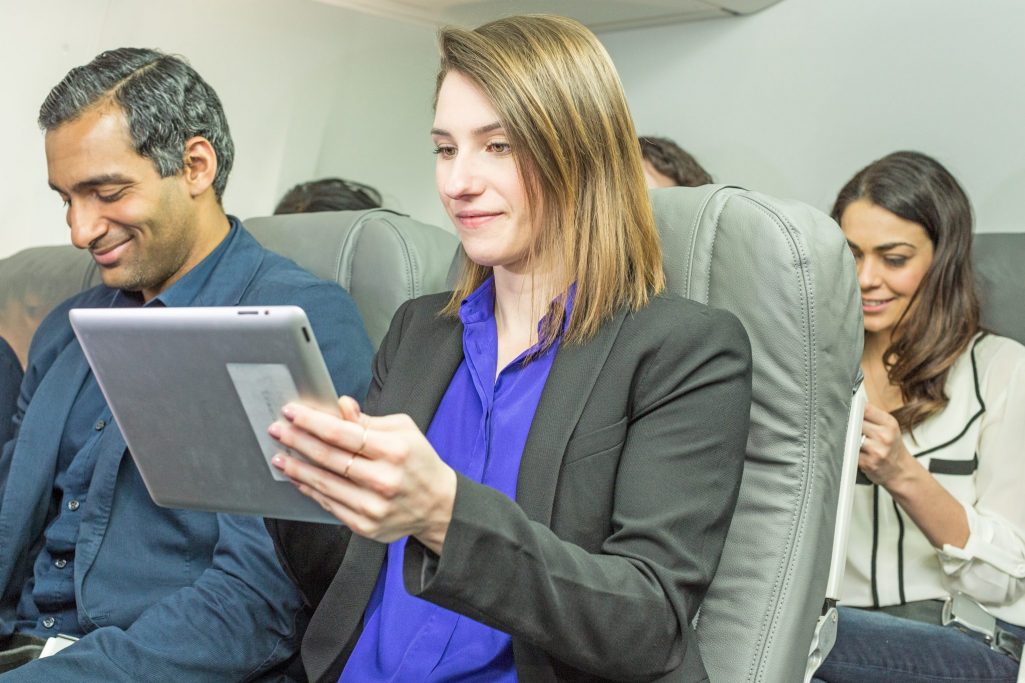Skift Take
Let's hope the deal talks will go faster than Wi-Fi aboard a plane.
Gogo, the in-flight internet company, is in talks to sell its commercial aviation business.
The Chicago-based company said Monday during an earning calls that in the second quarter it began formal talks to sell its commercial aviation division to a service provider, a satellite operator, or an avionics company. None of the interested parties was identified on the call.
“Covid has accelerated consolidation discussions as industry players look to emerge from the crisis with the strongest portfolio of assets they can to capture future industry growth,” said Oakleigh Thorne, president and CEO.
“Several parties have expressed interest,” Thorne said. “In July, we completed the legal separation of the two businesses by establishing separate balance sheets and segregating assets, liabilities, contracts, licensees, and employees by division.”
Gogo would sell the unit debt-free but expect an ongoing services sales agreement for use of its air-to-ground services network for some period of time, Thorne said.
Gogo’s chief rival in North America is ViaSat, based in Carlsbad, California. But many satellite-service and airline tech providers, such as Panasonic, Lufthansa Technik, OneWeb, and Inmarsat, might like Gogo’s commercial arm as an adjunct business.
Gogo combining with a rival might enable the airline sector to standardize the hardware and software for providing in-flight internet, analysts said. So a merger might make speedy Wi-Fi more common. But experts also saw a likelihood of price hikes for passengers for premium service once passenger volumes rebound.
Gogo has claimed “leading market share with many of the world’s leading airlines.”
Executives noted that in the past two years they had carved out its commercial aviation business from its unit focused on serving private jets and other business aviation customers with Wi-Fi.
Gogo’s North American commercial aviation business total revenue decreased to $30 million in the second quarter, down 72 percent from a year earlier.
The airline industry has faced ongoing passenger gripes about high-priced and low-quality Wi-Fi in the sky. But as carriers have moved away from offering in-flight entertainment systems, some have tested new offerings. The sector faces switches to next-generation technologies such as 5G and satellite-based services (Gogo said Monday it will be compatible with SpaceX’s StarLink.)
Gogo said its second-quarter revenues fell 55 percent to $96.6 million, year-over-year. It reported a loss of $86 million, versus a loss of $84 million from a year earlier. It recently laid off 143 workers out of about 1,000.
Industry watchers looking for flickers of optimism will like some numbers Gogo shared. The company reported a positive trend in in-flight internet sales in North America. Before the crisis, its North American sales averaged just under $1 million per day. In May, that number collapsed to only under $200,000 a day. In June and July, it grew to $275,000 a day. And in August, it has been selling more than $300,000 a day.
The Daily Newsletter
Our daily coverage of the global travel industry. Written by editors and analysts from across Skift’s brands.
Have a confidential tip for Skift? Get in touch
Tags: earnings, gogo, ife, in-flight entertainment, inflight entertainment, inflight internet, inflight Wi-Fi, inflight wifi, mergers and acquisitions, wi-fi
Photo credit: A passenger uses in-flight internet service on a flight. Gogo, the in-flight internet company, is in talks to sell its commercial aviation business to a competitor, the company said. Gogo
